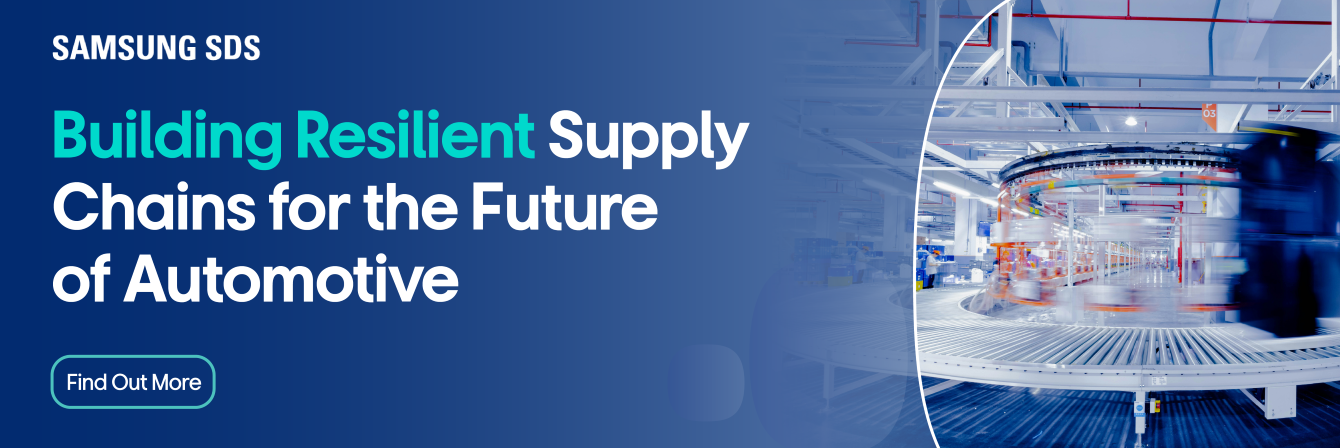
The shift from internal combustion engines to electric and autonomous vehicles isn’t just a technological revolution, it’s a supply chain revolution. Automotive manufacturers and suppliers today are under intense pressure to balance innovation, cost control, and resilience while dealing with raw material shortages, shifting trade rules, and technologies evolving faster than most organizations can adapt.
And while electric vehicles (EVs) and autonomous platforms come with a new set of challenges, they’re still vehicles at their core representing complex machines made up of 25,000 to 35,000 individual components sourced from thousands of suppliers globally. Managing that level of complexity while integrating new technologies demands a fundamentally different approach.
That’s where design-to-source comes in. It’s not just a process or a tool—it’s a methodology that bridges the gaps between product engineering, manufacturing, and sourcing, creating a unified, data-driven strategy that keeps pace with change and sets the stage for sustainable competitiveness.
The Procurement Gap in Automotive
With many years of experience in indirect procurement managing items like office supplies and other non-production materials, I’ve seen firsthand how organizations can achieve impressive ROI by automating and integrating the procure-to-pay process. Direct materials procurement in manufacturing, however, is a very different challenge, with far greater complexity and risk.
In many organizations, procurement is invited into the conversation only after engineering has locked down the design. By then, as much as 80% of the product’s cost is already baked in, and the sourcing team is left trying to manage risks and costs with limited options.
This “handoff” model creates a chain reaction of problems:
- Last-minute changes to the bill of materials (BOM)
- RFQ cycles that stretch far beyond schedule
- Supplier constraints discovered too late to pivot
- Cost overruns that erode margins before the first unit ships
When you layer in global competition, especially from China’s vertically integrated supply chains and aggressive pricing models, the challenge becomes even more pronounced. Competing effectively now requires smarter cost insights, earlier collaboration, and greater agility than legacy processes can deliver.
Design-to-Source: An Integrated Approach
Design-to-source turns the old model on its head. Instead of working in silos, engineering, sourcing, and manufacturing teams collaborate from day one. The goal is simple: design automotive products that are innovative, manufacturable, cost-competitive, and resilient.
At its core, this approach means:
- Early Cost and Risk Modeling – Understanding the cost and risk implications of design decisions before they’re locked in.
- Supplier Collaboration – Bringing suppliers into the design process, reducing redesigns and improving manufacturability.
- Scenario Analysis – Testing how trade shifts, tariffs, or sustainability rules could affect a design before it ever hits production.
- Digital Integration – Building a single thread of information that keeps every stakeholder from engineering to the plant floor working from the same data.
This integrated strategy doesn’t just help organizations move faster. It builds the resilience needed to manage disruption while maintaining competitive pricing.
Additive Manufacturing: Opportunity Meets Complexity
Over the past year, I’ve developed a genuine appreciation for just how transformative additive manufacturing can be. It’s changing the way products are designed and built, allowing manufacturers to tackle complex geometries, simplify assemblies, and even localize production to deliver faster and more cost-effectively.
But additive manufacturing also introduces new layers of complexity. It brings specialized materials that demand rigorous validation and strict compliance tracking. Manufacturers often find themselves managing sourcing relationships with highly niche suppliers, which can complicate procurement and risk management. On top of that, the rapid iteration cycles that make additive so appealing can also strain traditional processes, requiring faster decision-making, tighter integration across teams, and more agile systems to keep up with the pace of design and production changes.
Design-to-source helps manage this complexity by integrating engineering, sourcing, and manufacturing data into a single process. This allows organizations to take advantage of innovations like additive manufacturing strategically, without creating bottlenecks or cost surprises.
Why Automotive Needs This Shift
No other sector faces the mix of pressures that automotive does today. Here’s where an integrated design-to-source approach makes the biggest difference:
1. Battery and EV Supply Chains
Critical materials like lithium, cobalt, and nickel remain volatile in cost and availability. Designing with sourcing insights allows teams to develop multi-sourcing strategies and stabilize costs before production begins.
2. Software-Defined Vehicles
Modern vehicles are digital platforms as much as mechanical products. Connecting hardware and software sourcing through a single process reduces integration delays and creates a more predictable path to launch.
3. Autonomous Systems and Sensors
Technologies like LIDAR and radar have long lead times and tight compliance requirements. Identifying suppliers and validating processes early can prevent expensive redesigns and missed milestones.
4. Global Trade and Tariffs
With tariffs and content rules constantly shifting, scenario planning during design helps manufacturers stay compliant while optimizing for total landed cost.
5. Competing with Low-Cost Global Players
Chinese manufacturers benefit from vertical integration and aggressive pricing. By designing with cost intelligence and local sourcing strategies in mind, companies can close the cost gap without sacrificing quality or speed.
Bridging the Workforce Skills Gap
There’s another dimension to this conversation: people. The rapid adoption of electrification, additive manufacturing, and digital tools is widening the skills gap across the automotive workforce. In recent conversations with universities and colleges, this challenge came up again and again: the industry is evolving faster than training programs can keep up.
Closing that gap requires a combination of skill development, cross-functional learning, and cultural transformation. Teams need to be upskilled in analytics, collaboration tools, and new manufacturing methods to keep pace with modern demands. Engineers must gain a deeper understanding of sourcing implications while procurement teams should develop an appreciation for the trade-offs inherent in design decisions.
Organizations that prioritize talent development alongside process transformation—while partnering with academic institutions to shape future curricula—will adapt faster and position themselves as leaders in this new era.
The Real-World Impact
For companies that have started integrating design-to-source principles, the results are striking: makes the biggest difference:
- Faster Time-to-Market – RFQ cycles that once took months are now measured in weeks.
- Lower Costs – Early cost modeling and supplier collaboration have driven double-digit savings on key programs.
- Supply Chain Resilience –Proactive scenario planning has helped organizations weather disruptions from semiconductor shortages to shipping delays.
- Predictability – Procurement and production teams spend less time reacting to problems and more time driving strategic, proactive solutions.
These aren’t isolated wins. They’re a blueprint for how automotive manufacturers can thrive in the face of unprecedented change.
The Strategic Edge
The EV transition is creating clear winners and losers. Companies that can unify design, sourcing, and manufacturing are gaining a decisive strategic advantage. They’re able to launch products faster into competitive markets, maintain tighter control over costs and margins, and build supply chains that can adapt quickly to disruption.
Just as importantly, they are developing a workforce equipped to sustain innovation over the long term. This level of integration is no longer optional. In the coming decade, design-to-source will become the standard for how successful manufacturers not only build products but also secure their future.
Shaping the Future of Automotive Together
American manufacturing is being reshaped right now by innovators like Samsung who enable customers to tackle complex challenges with proven, forward-looking solutions. The future of the automotive industry will belong to organizations that break down silos and design for performance, resilience, and cost competitiveness all at once, turning today’s challenges into tomorrow’s opportunities. Now is the time to engage, collaborate, and lead in shaping the next era of automotive.
Want to see a real-world automotive case study of design-to-source in action? Download this direct procurement white paper and jump to page 9 for the details.
A version of this article was recently published in Automation Alley’s Integr8 Playbook: "Innovative Tech Drives Mobility Solutions".

George Stasiw is a recognized thought leader in manufacturing, supply chain, procurement, and technology innovation. With a foundation built at IBM and advanced AI studies at MIT, he is now a prominent voice for design-to-source solutions at Samsung SDS. George thrives when brainstorming with organizations looking to enhance procurement processes, optimize BOM management, and connect their design and sourcing teams. Start a conversation with him at g.stasiw@samsung.com.
